The plucky 1955–62 BMW Isetta isn’t going anywhere
Car enthusiasts often accuse modern, tech-laden offerings of being more appliance than automobile, but the overlap between, say, the refrigerator and the car industry is small. Not so in 1955, however. In large part, BMW owes the success of its petite Isetta to the engineering prowess of Renzo Rivolta, who made his name in the refrigerator business before switching to vehicle manufacturing.
Better known for his ’60s and ’70s performance cars (including the Bertone-bodied and Chevy-powered Rivolta and Grifo—which was also available with a Ford engine), Rivolta sold BMW the licensing and tools for his bubble car in the mid-’50s. The purchase pulled BMW out of a post-war slump; the German-built bubbles sold like hotcakes—22,000 in the first year alone. The fuel-sipping Isetta also helped sustain BMW’s fortunes during the Suez Crisis in late ’56 and into 1957.
The BMW Isetta 250 debuted in 1955 with a four-stroke, single-cylinder engine plucked from BMW’s R25 motorcycle that, unsurprisingly, displaced 250 cc and made 12 hp. In 1956 BMW kept the four-stroke-single configuration but upgraded to a 297-cc unit; these cars are known as Isetta 300s. From ’57–59 BMW produced the four-wheel, four-seat Isetta 600, which sported a 582cc flat-twin making a furious 19.5 horsepower; this article, however, focuses on the more familiar Isetta 250 and 300.
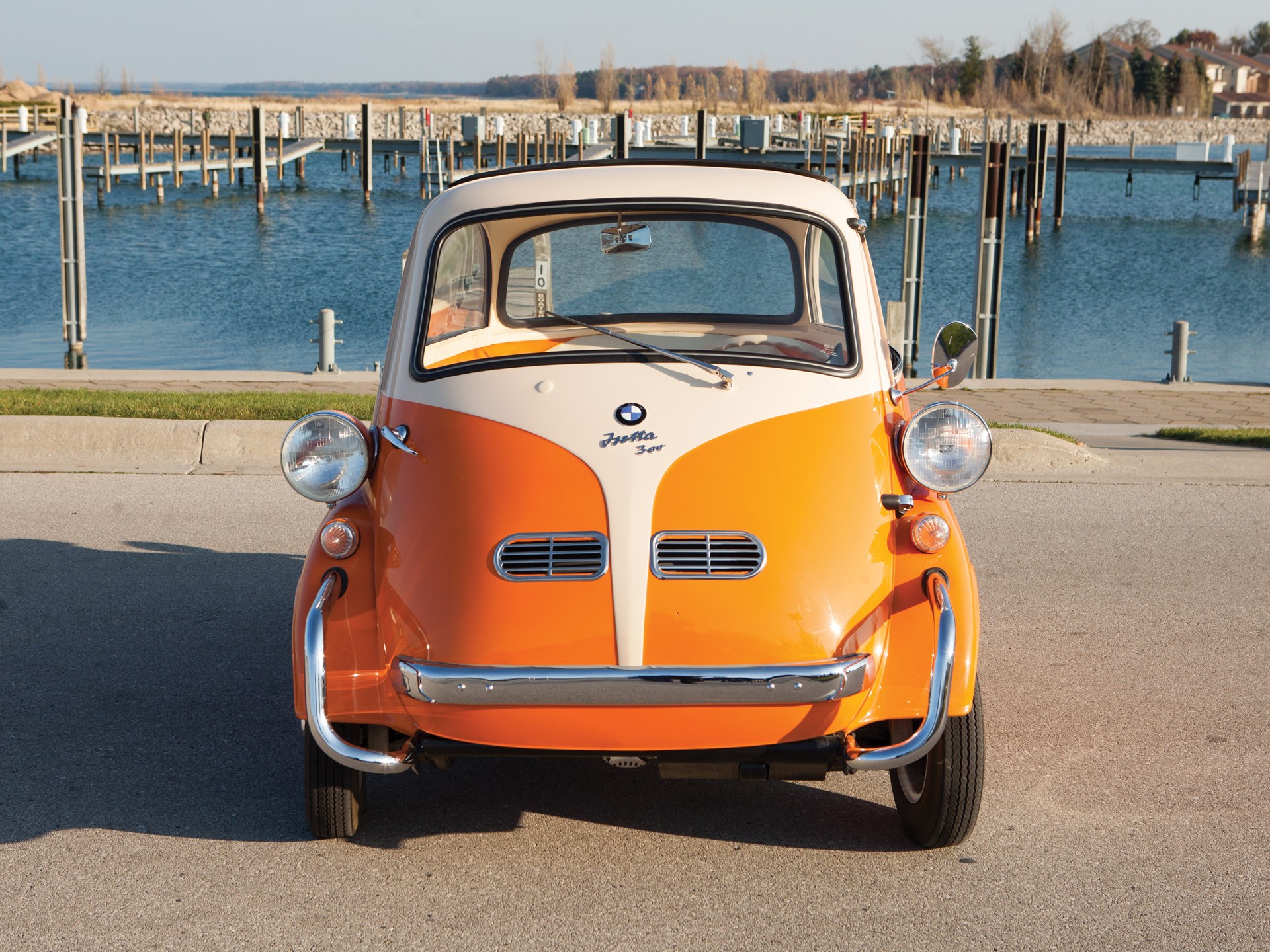
The Isetta was originally marketed as a “motocoupé,” and though many know them as bubble cars, the Isettas’ bike engines qualified them as motorcycles in postwar Germany. A motorcycle license cost less than its automotive equivalent, so the Isetta’s classification favored German customers on tight budgets—even though, ironically, German customers only had the option of the four-wheeled variant.
At 770 pounds, and with the engine shifted slightly to the right of the petite vehicle, the petite two-seater Isettas were sensitive to the position of a single passenger. Right-hand drive versions required ballast—which a 12-hp car didn’t have much extra bandwidth to haul, nevermind the three-wheeled iterations. Thus, most Isettas were left-hand drive. Later models featured sliding windows to minimize distracting reflections, and for the “safety” of passengers inside, all sported canvas roofs that could double as an emergency exit if the front (and only) door became jammed.

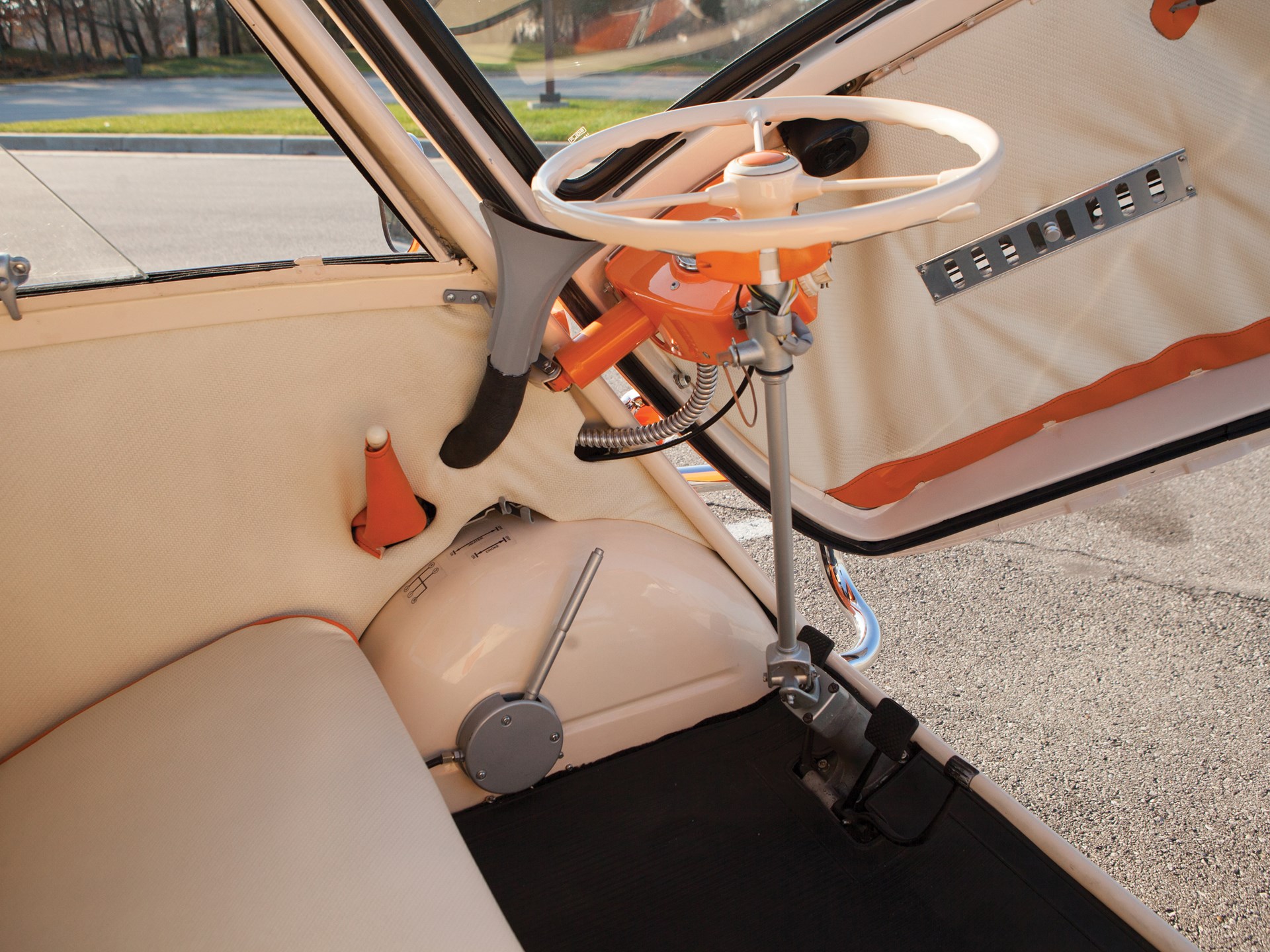
BMW built 161,728 Isettas over the model’s eight-year production run (1955–62) in Germany alone. The company played fair to the origins of the Isetta and sold the license to other countries (including France, Belgium, Spain, and Brazil), where 41,000 were constructed, including convertible and pickup body styles. Yes, though this is a custom creation based on a 600, the Brighton-based Isetta of Great Britain Ltd. built a pipsqueak pickup capable of hauling 165 pounds.

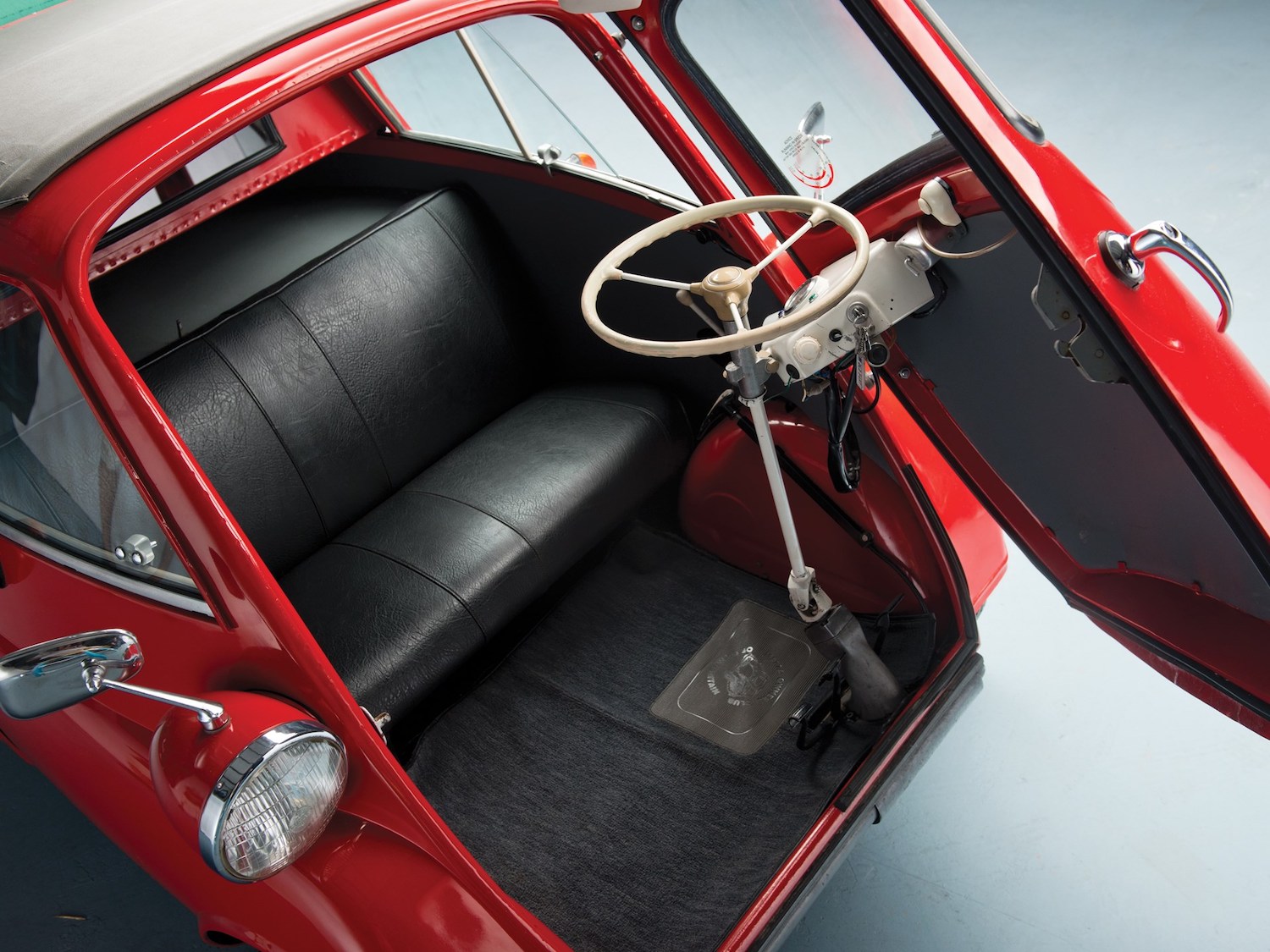
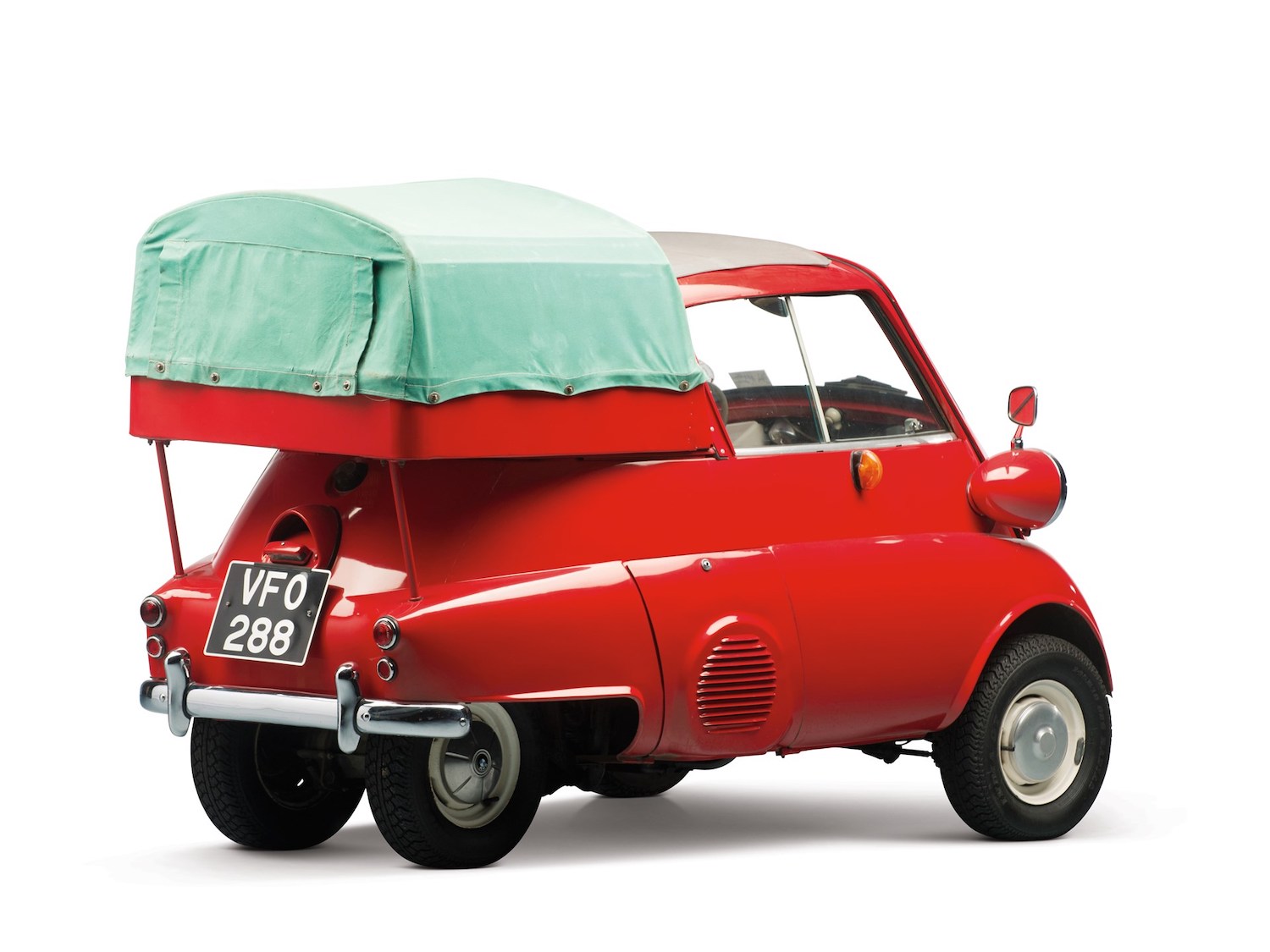
This fire-engine red example, its bed capped by a teal canvas cover, is the only one known to exist today. RM Sotheby’s sold it for $63,250 back in 2013 as part of the Bruce Weiner Microcar Museum collection, where it kept some rather eccentric company. Hint: one wasn’t factory-built.



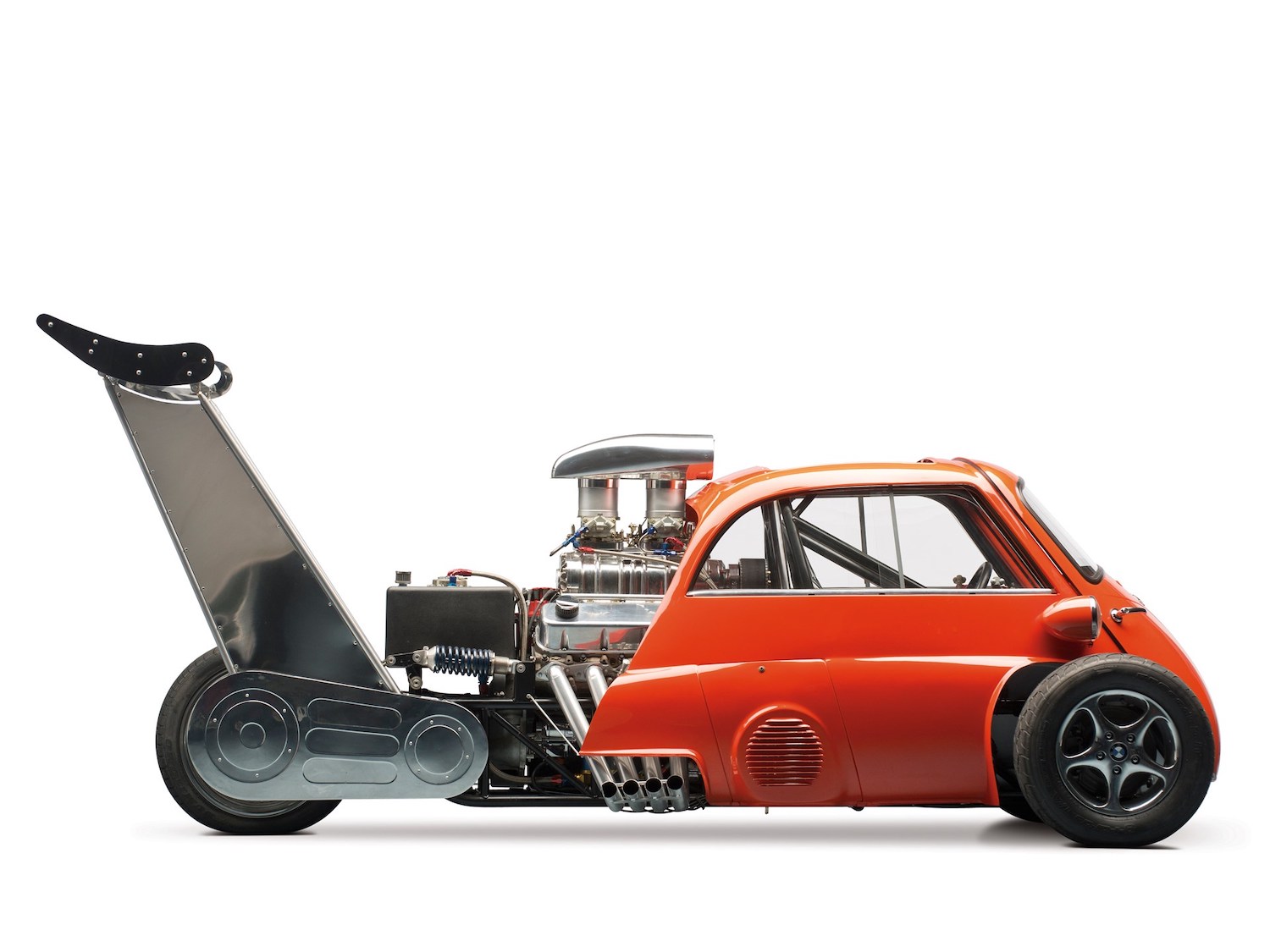
“Whatta Drag” displaces more cubic inches than the largest Isetta did centimeters, thanks to a supercharged Chevy V-8, and shares very little with any other Isetta. While this contraption was built to mimic a Hot Wheels model, the other two were indeed factory-built; the police car hails from Duderstadt, a district of northern Germany’s Hildesheim, and the convertible boasts a limited run of only 50 units. Not counting Whatta Drag, the Isettas of the Bruce Weiner Microcar Museum collection notched several record Isetta prices: the convertible sold for $89,700 and the police car for $86,000. (But come on—the convertible has green plaid seats to match its beach-worthy, sea-green paint. Wouldn’t you shell out for all that, plus a wicker basket on the back?)
Excellent (#2-condition) Isetta values have trended down since their peak of $44,500 in January of 2017 to their current median #2-condition value of $38,500. However, that’s nothing to sneeze at for such a diminutive automobile, and it testifies to the Isetta’s enduring charm. If you’re willing to slap down $3013 per hp, your choices range far beyond the bug-eyed Bavarian; each of a 427 Shelby Cobra’s horses rings in $3059. Though Isetta 250 and 300 values were down 2.5 percent in the latest Hagerty Price Guide update, the cars are still worth more than they were five years ago: #2 values are up 5–8 percent (depending on the year) since 2015 for 300s, and 16 percent for 250s in the same condition.
The Isetta’s oddball charm bodes well for its longevity in the collector market; though Boomers comprise the majority of Isetta quotes (59 percent), Gen Xers account for 27 percent (for reference, Gen Xers comprise only 33 percent of the entire market). Isettas’ conservative fuel economy adds to their appeal, and, for the increasing number of those in or around urban areas, they’re space-efficient as well.
Should you be enchanted by the weird little teardrops, you certainly don’t have to spend 40 grand to get a driver-quality car. Values for #3 (Good) condition cars hover around $29,300 for ’57–62 300 models, and 250 models (’55–56) in the same condition dip below that to the high $25,000s. We also observed that the average sale price at auction in 2019 was $26,700, roughly #3-condition money.
The Isetta is a plucky little trooper with a great origin story, and the numbers indicate it’ll stick around for a while.
Like this article? Check out Hagerty Insider, our e-magazine devoted to tracking trends in the collector car market.


